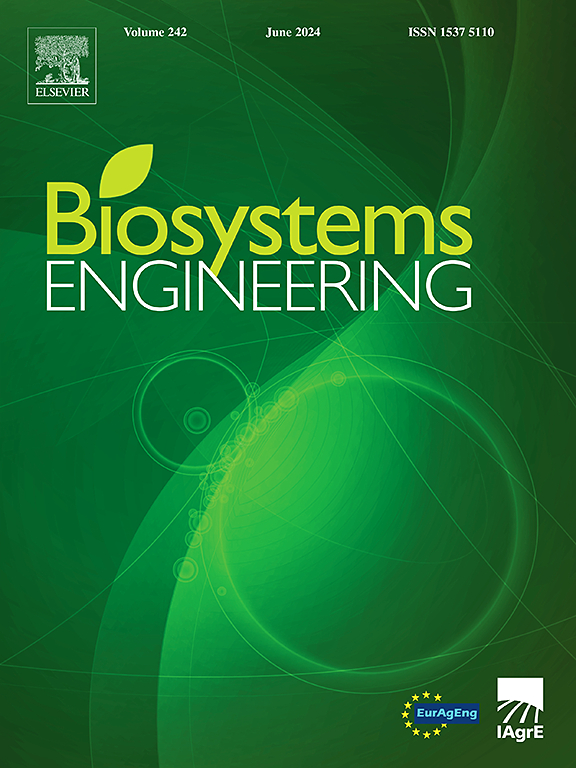稻谷流动特性对橡胶辊脱壳机喂料槽取向调节机制的影响
IF 5.3
1区 农林科学
Q1 AGRICULTURAL ENGINEERING
引用次数: 0
摘要
在橡胶辊脱壳机脱壳过程中,稻谷取向混乱降低了脱壳效率。这导致材料浪费,产品质量下降。虽然传统的长喂料槽具有固有的定向调节能力,但其基本机制仍不清楚。本研究采用离散元法(DEM)模拟稻谷在进料槽内的运动动态,通过颗粒流动分析阐明了进料槽的定向调节机制。研究结果表明,提高投料率可以改善稻谷的垂直排列,但代价是破碎率增加。空间分析表明,剪切速率抑制了颗粒走向,而静水压力则增强了颗粒走向。此外,壁面效应改变了这些参数,导致侧壁附近的垂直排列加强,而中部区域的垂直排列略有减少。基于这些发现,研究人员开发了一种创新的挡板进料槽,通过控制壁面效应有效地调节剪切速率和颗粒间静水压力。实验验证证实,与传统设计相比,在不影响破损率的情况下,船体效率提高1.8%。该研究为优化橡胶辊脱壳给料系统提供了理论基础和实践解决方案。本文章由计算机程序翻译,如有差异,请以英文原文为准。
Effect of paddy grain flow behaviour on orientation adjustment mechanisms in rubber roll huller feeding chute
In the hulling process of rubber roll hullers, disordered paddy grain orientation reduces hulling efficiency. This results in material wastage, diminished product quality. While conventional long feeding chutes exhibit inherent orientation adjustment capabilities, their fundamental mechanisms remain poorly understood. This study employed the discrete element method (DEM) to simulate paddy grain motion dynamics within the feeding chute, elucidating the orientation adjustment mechanism through granular flow analysis. The findings demonstrate that elevated feeding rates improve the vertical alignment of paddy grains, albeit at the cost of increased breakage percentage. Spatial analysis reveals that grain alignment is suppressed by shear rate while being enhanced by hydrostatic pressure across the chute width. Furthermore, wall effects modify these parameters, resulting in strengthened vertical alignment near the sidewalls while marginally reducing it in central regions. Based on these findings, an innovative baffled feeding chute was developed that effectively regulates shear rate and inter-particle hydrostatic pressure through controlled wall effects. Experimental validation confirmed a 1.8 % enhancement in hulling effectiveness without compromising breakage rates compared to conventional designs. This research provides both theoretical foundations and practical solutions for optimising rubber roll huller feeding systems.
求助全文
通过发布文献求助,成功后即可免费获取论文全文。
去求助
来源期刊

Biosystems Engineering
农林科学-农业工程
CiteScore
10.60
自引率
7.80%
发文量
239
审稿时长
53 days
期刊介绍:
Biosystems Engineering publishes research in engineering and the physical sciences that represent advances in understanding or modelling of the performance of biological systems for sustainable developments in land use and the environment, agriculture and amenity, bioproduction processes and the food chain. The subject matter of the journal reflects the wide range and interdisciplinary nature of research in engineering for biological systems.
 求助内容:
求助内容: 应助结果提醒方式:
应助结果提醒方式:


